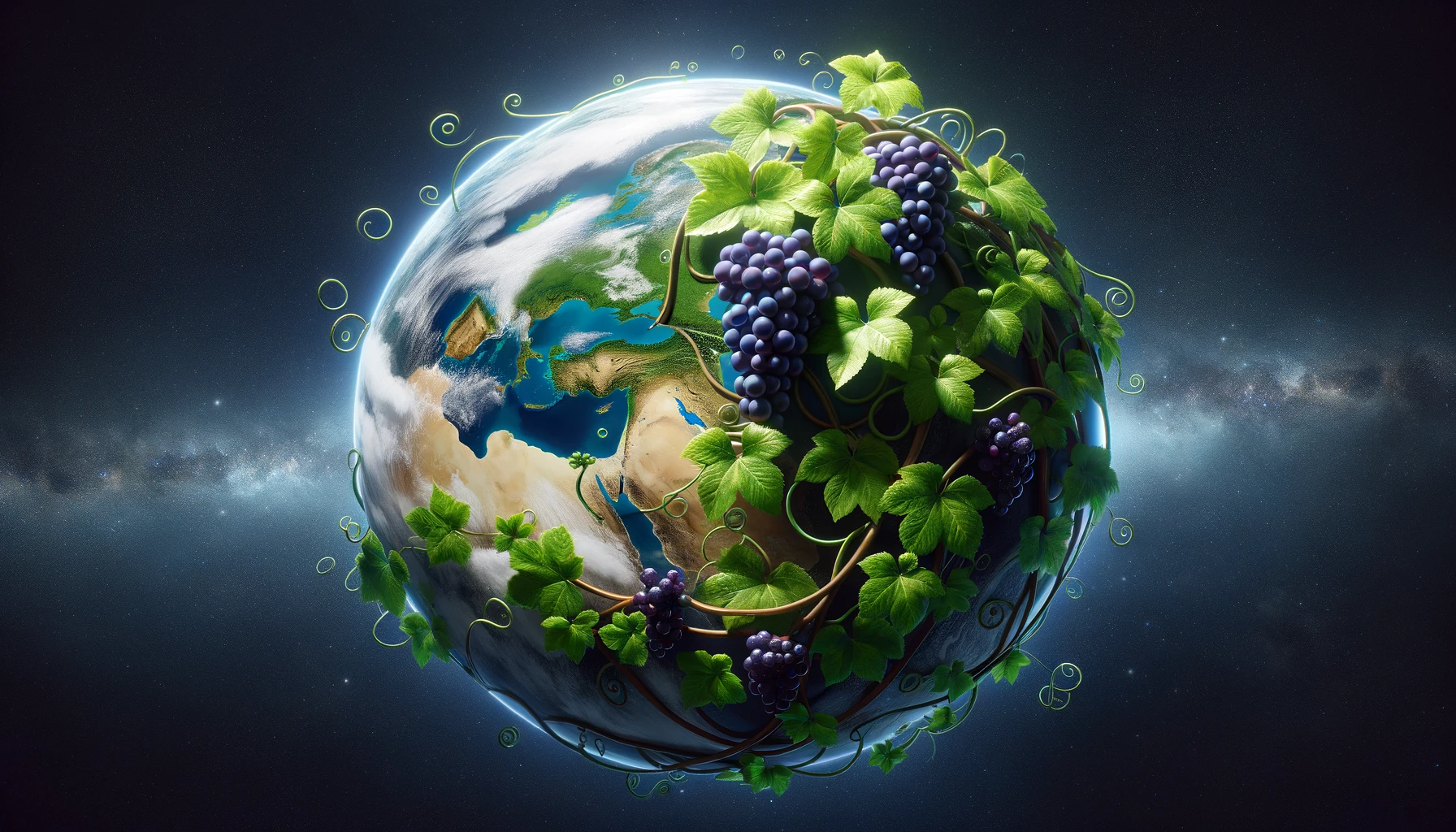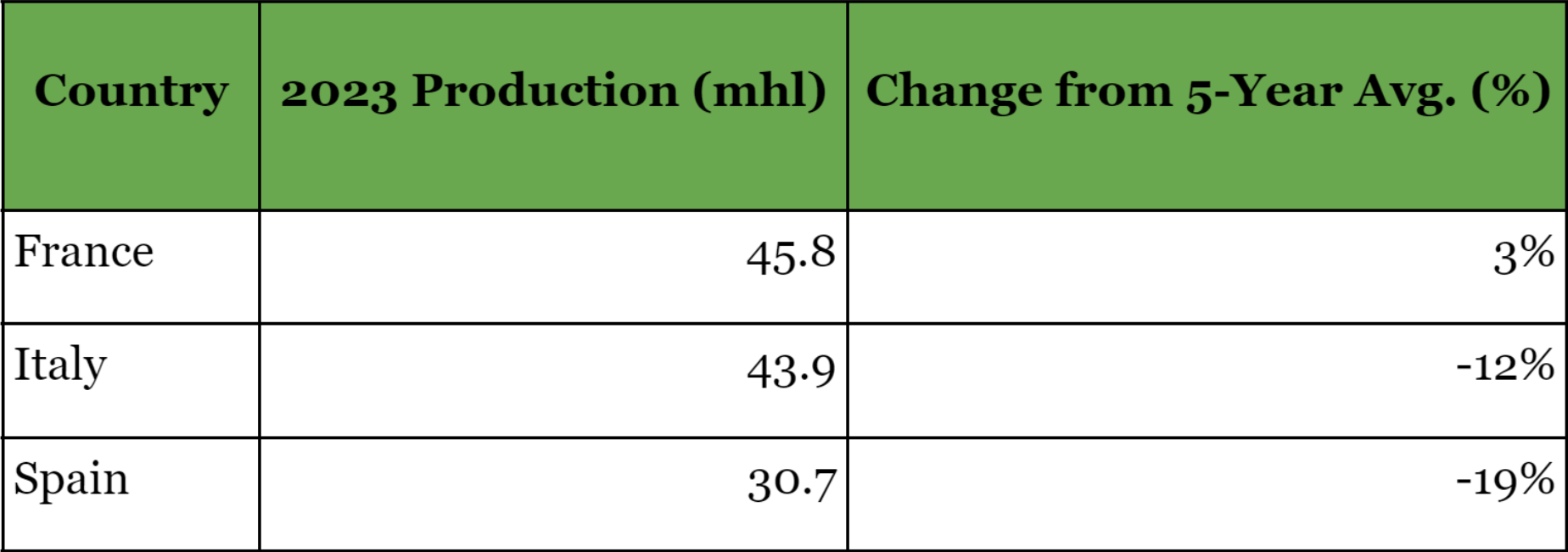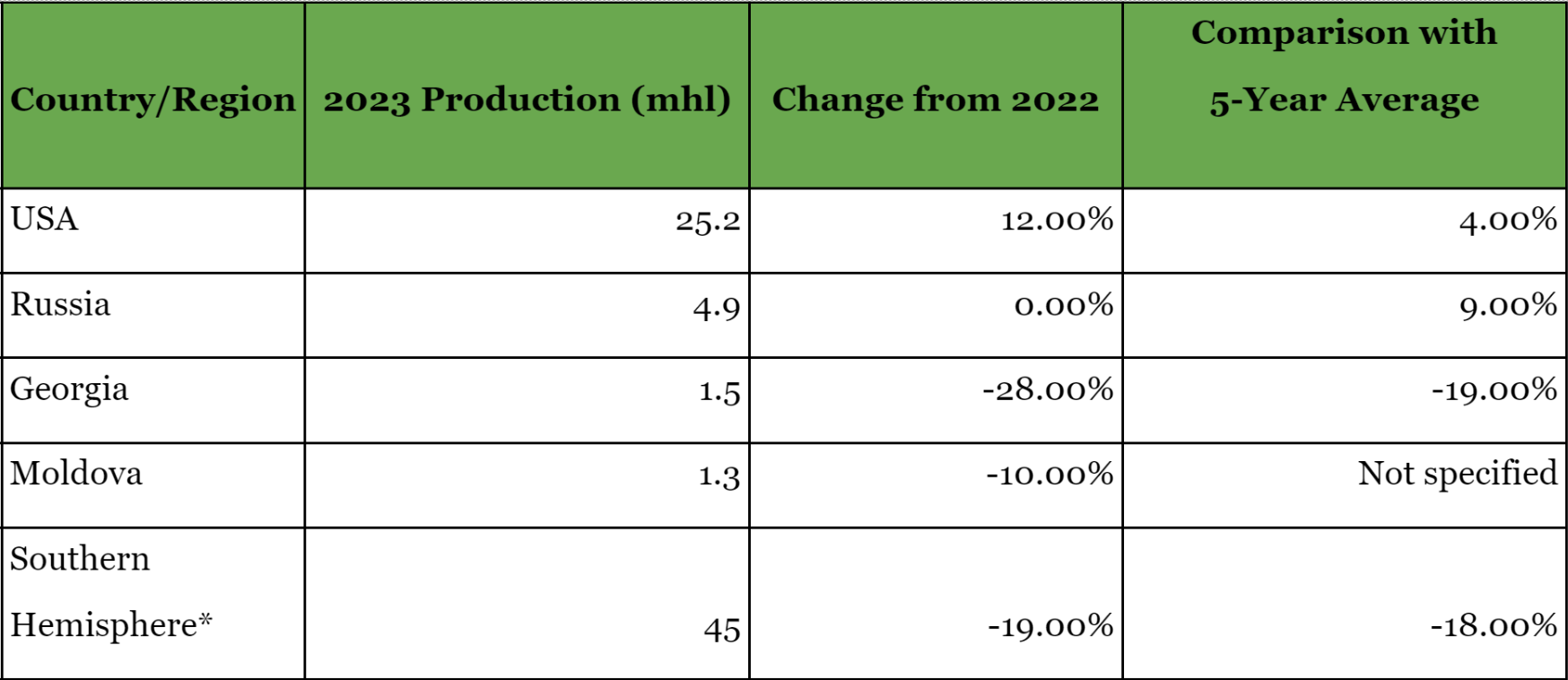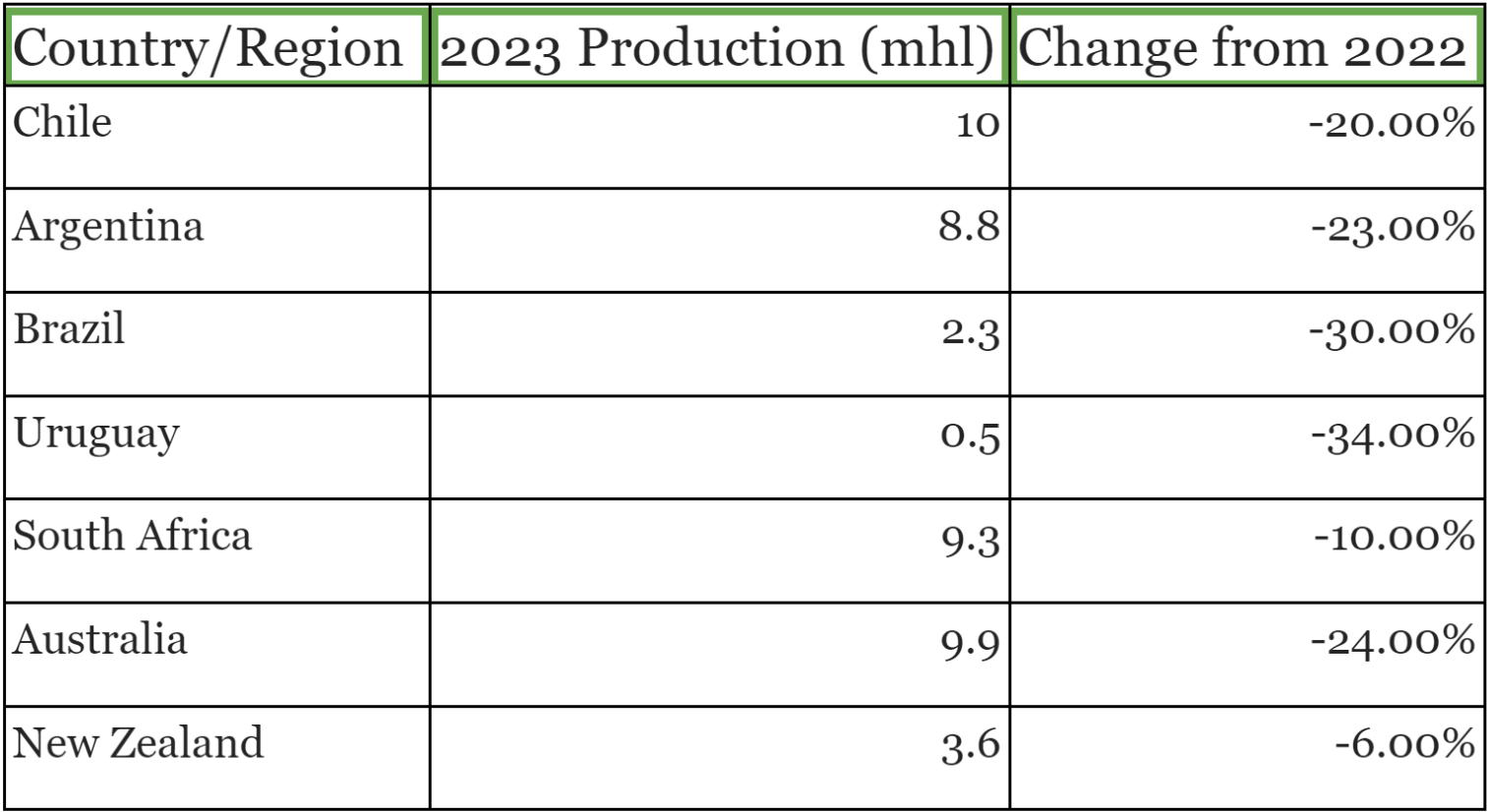- Wine Color/Type
- Top Occasions
- Unique Wines
- Surprise Me!
Smallest Wine Harvest Produced in 60 Years
Every year the International Organisation of Vine and Wine (OIV) releases a forecast of the annual Wine production in 2023 facing significant challenges, leading to the smallest harvest in 60 years.
Viticulture is one of the most important agricultural industries. Yearly fluctuations make it challenging. (Credit: DallE)
This was largely due to vineyard diseases like mildew and climate-induced frost events, which decreased the overall volume. Here are the consolidated figures:
· Total wine production: Approximately 240 million hectoliters (mhl) or 6,340 million gallons.
· Northern Hemisphere: 150 mhl or around 3,900 million gallons.
· Southern Hemisphere: 90 mhl or about 2,400 million gallons.
Although these numbers may seem substantial, they represent a total decrease of about 7% compared to the average wine volume of 2022 and an 8% decline from the five-year average. With wine becoming more expensive and consumption decreasing, the market is likely to self-regulate.
This adjustment is partly supported by subsidies from the European Union (EU), which are encouraging Bordeaux winemakers to remove vines and cultivate other agricultural crops. Bordeaux aims to reduce its vineyard area by 10%, from approximately 110,000 hectares to 100,000 hectares, a scale comparable to the total vineyard land in Germany.
The Biggest Wine Producers Are…
Every year, France, Italy and Spain compete for being the largest producer by volume. (Credit: DallE)
France leads global wine production in 2023, maintaining its 2022 output with 45.8 million hectoliters, 3% above its five-year average.
Despite challenges like downy mildew in Bordeaux and Sud-Ouest, and heatwaves in Languedoc-Roussillon, high yields are expected from Cognac, Corsica, and Champagne.
In contrast, Italy's production fell to 43.9 million hectoliters, a 12% drop from 2022 and the lowest since 2017, due to adverse weather including downy mildew, floods, hailstorms, and drought.
Despite France achieving a small surplus, they face different challenges. (Source: OIV)
Spain, the world's third-largest wine producer, is estimated to produce 30.7 million hectoliters in 2023, marking a 14% decrease from 2022 and 19% below its five-year average. This year's production is anticipated to be the lowest in two decades, primarily due to severe drought and extreme temperatures, especially impacting Castilla-La Mancha, the largest wine-producing region.
Indifferent Vintages
The USA, ranking fourth globally, estimates its wine production at 25.2 million hectoliters, a 12% increase from 2022 and 4% above its five-year average. Favorable conditions like cool temperatures and heavy winter rains in Napa and Sonoma contributed to this growth.
*Note: The Southern Hemisphere data represents the combined production of all major wine-producing regions in this area. The 2023 production is expected to be the lowest since 2003 and will constitute 19% of the global total. (Source: OIV)
The US is on the winning streak. (Credit: DallE)
In Eastern Europe, Russia's wine production remains steady at 4.9 million hectoliters, consistent with 2022 and 9% above its five-year average. Georgia faces a 28% decrease in production to 1.5 million hectoliters, 19% below its five-year average, due to adverse weather like heavy rain, hail, and strong winds affecting its eastern regions. Moldova's production is also down, expected at 1.3 million hectoliters, a 10% drop from 2022.
In the Southern Hemisphere, preliminary 2023 wine production estimates are more accurate due to harvests concluding in the first half of the year. After a record-high in 2021 and a decline in 2022, 2023's production is estimated at 45 million hectoliters. This marks a significant 19% decrease from 2022 and an 18% drop from the five-year average, making it the lowest since 2003.
This decline is largely due to extreme climate events affecting all major wine-producing regions in the Southern Hemisphere. In 2023, the region's wine production is expected to constitute 19% of the global total.
Troubled South Americas
All major South American wine-producing countries saw significant production declines compared to 2022. Chile leads as the largest producer in the Southern Hemisphere with 10 million hectoliters, 20% below last year and 18% under its five-year average, impacted by wildfires and droughts.
Argentina's production fell to 8.8 million hectoliters, a 23% drop and one of its lowest volumes, due to spring frosts and hailstorms.
Brazil's production decreased by 30% to 2.3 million hectoliters, primarily due to dry conditions in key regions like Rio Grande do Sul. Uruguay experienced a 34% reduction to 0.5 million hectoliters, affected by severe drought and heat waves.
South Africa's production in 2023 is estimated at 9.3 million hectoliters, down 10% from 2022 and 8% from its five-year average, with challenges from fungal diseases like mildew.
Australia's production decreased by 24% to 9.9 million hectoliters due to persistent rain, cold, floods, and inventory pressure leading to yield caps.
Contrastingly, New Zealand, the second largest producer in Oceania, saw a slight decrease to 3.6 million hectoliters (6% less than 2022), yet it's the only country in the Southern Hemisphere with positive growth over the last five years, up 14%.
New Zealand produced 14% above its 5-Year-Average. (Source: OIV)
In general, despite having lower volumes, it is largely seen positively in the wine industry. Due to lower volumes, current wines in barrels and tanks can be sold which could lead to stable prices in the mid-term.
Vintage variations on quality differ annually. If you want to read more about vintages and how they express the quality, click here to explore Bordeaux or Burgundy.
Peter Douglas
Source: OIV
Latest articles






